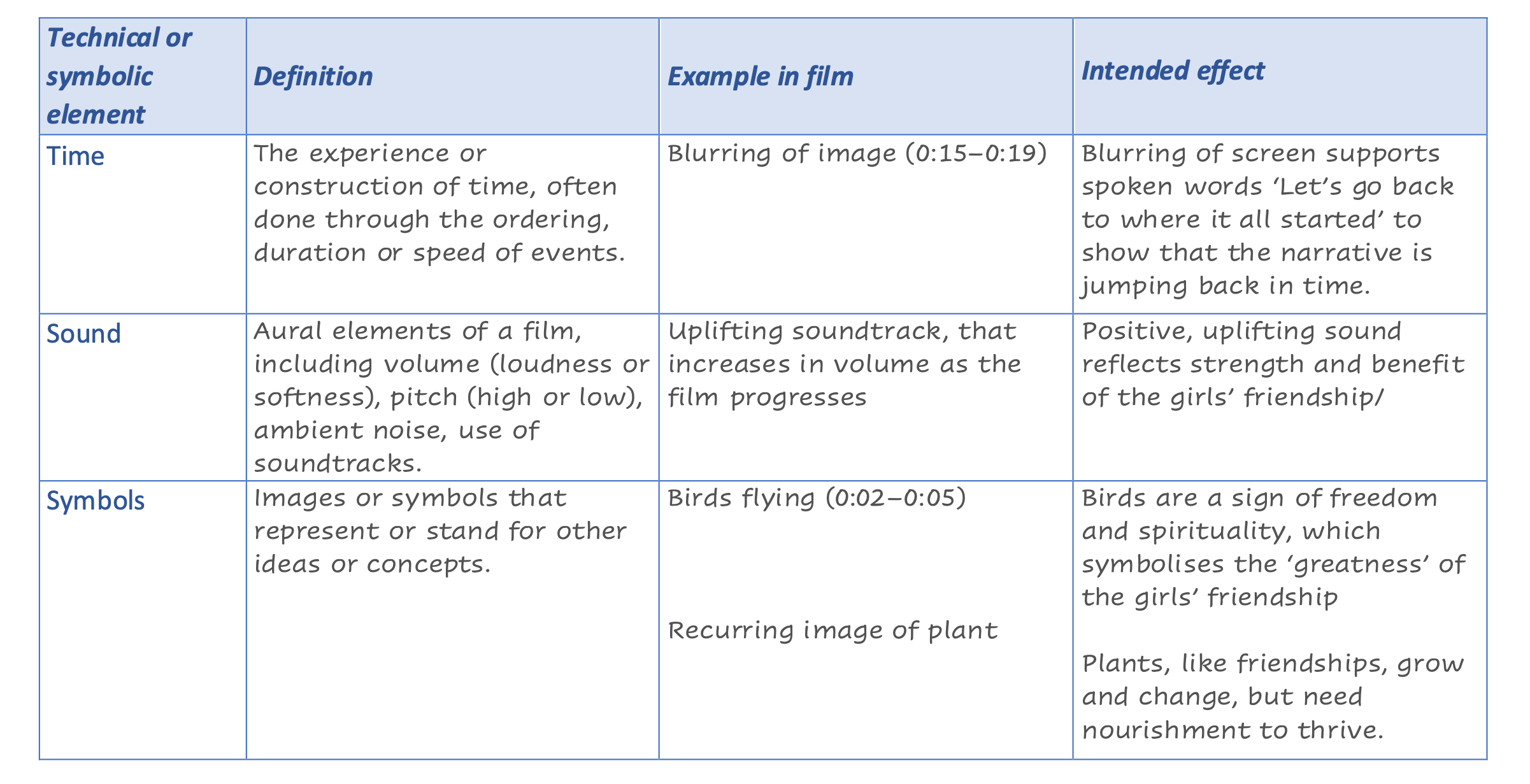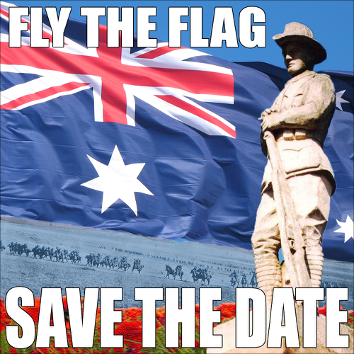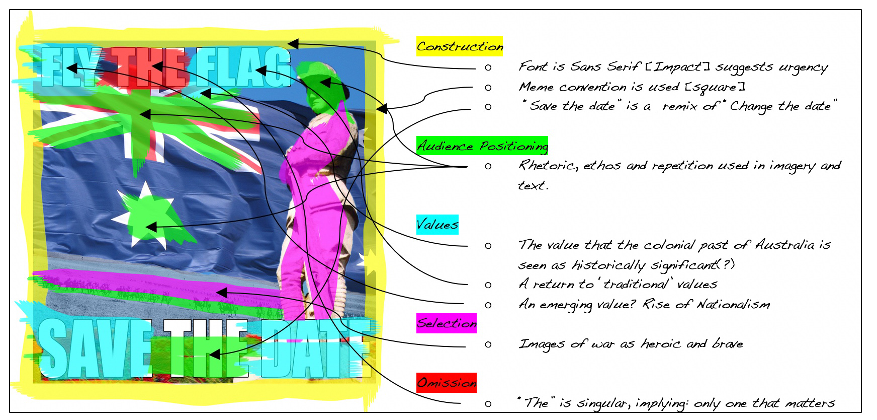When analysing media artwork, students need to consider more than simply the artwork itself. Critical media literacy requires students to analyse the text itself, as well as the roles of the creator, the audience, and the stakeholders with interest in this power relationship [between creator and audience]” (Mirra, Morrell, & Filipiak, 2018, p. 14).
In other words, critical media literacy strategies enable students to critique the media they encounter by enabling them to:
- consider the way the viewer is positioned
- identify values and emotions the artwork appeals to
- examine the information the creator has included
- think about what information the creator has omitted (Kellner & Share, 2007).
Students need to learn to read all forms of media critically so that they are aware of how they are being positioned to understand and interpret the world. However, the use of social media can be useful in developing students' critical media literacy. This is because social media often represents information in opinionated or biased ways (Allcott & Gentzkow, 2017).
Explicitly teaching technical and symbolic elements in context
As outlined in the Victorian Curriculum, the technical and symbolic elements of media arts include composition, space, time, movement, sound, colour, and lighting (VCAA, n.d.). In multimodal texts, the technical and symbolic “work together to create meaning in different contexts and forms for different purposes” (VCAA, n.d., n.p.).
Before students can analyse media artworks, they must first understand the various technical and symbolic elements. Teachers should explicitly define and describe each of these elements and explain how they work within media artworks to inform, persuade, entertain, or educate.
Teaching language in context aids student understanding of the purposeful way language and grammar works (Derewianka & Jones, 2016; Myhill, Lines & Watson, 2012). The same principle can be applied to the teaching of technical and symbolic elements in Media Arts where students need to know and be taught explicitly how each mode (e.g. visual, written, audio) uses unique semiotic resources to convey meaning (Kress, 2010). To do this, the teacher can provide students with a media artwork as well as a table that lists the technical and symbolic elements. Space is provided in the table for students to define or describe the technical and symbolic elements and to also provide examples from the media artwork to show their understanding.
For example, a teacher might show
'Loyalty to Me', the 2019 lower secondary school winner of the
1-minute film competition. The teacher then uses the film to explain to students the technical and symbolic elements in the film, and their intended effect, while the students complete the worksheet, including examples from the film. Three elements are listed: Time, Sound and Symbols.

Curriculum links for the above example:
VCAMAR038,
VCAMAR045
Using memes to develop critical media literacy
The following activity is based on Elmore and Coleman's (2019) lesson sequence focussing on the critical media analysis of memes. Memes have been chosen as an engaging, tangible, and often controversial form of media artwork that expresses values to an audience (Scardina, 2017). The activity fosters opportunities to learn across all four strands of the Media Arts curriculum with a focus on the key Media Arts area of Viewpoints.
- Students are introduced to key Media Arts terminology related to the discussion and decoding of representations.
The teacher may review and adapt strategies found elsewhere in the Toolkit to introduce key terminology, including:
- Students choose or are given printed examples of a controversial or challenging meme. For example:

- Students are asked to annotate the meme. For example, they could use a different colour to show where each of the five elements of representation is being used in the meme, and then write notes down about the effect or impact of each representational element.

Note: If this is the first-time students are asked to annotate a diagram, teachers may need to model how to annotate, explicitly explaining their choices and reasons for highlighting specific areas. When modelling annotations, teachers should use
think-alouds to make explicit their reasoning behind their choices. Teachers may also wish to review the explicit teaching strategies found under
'Reading and explaining visual scientific images' in the Science section of the Toolkit.
- In pairs, students begin a critical analysis of the messages and meanings within the selected meme.
The following prompts may assist:
- Identify a possible intention of the meme's creator.
- To keep Australia Day as 26 January
- Identify the values in this meme as dominant, emerging and/or oppositional.
- Maintain dominant, 'traditional' Australian values
- Describe how technical and symbolic elements have been used in the construction of this meme. For example, colour and composition.
- Symbol of the Australian flag and digger merge Anzac and nationalist values and ignores/omits issues associated with colonial settlement
- Name two groups of people/audiences that might view this meme and describe their potential reactions or responses.
- Aboriginal and Torres Strait Islander people may be angry because they are excluded from the idea of Australia that is being presented.
- People who fought in the war might feel proud to be Australian and agree that the date should be 'saved.'
- Teacher leads a discussion to identify:
- the intended audience and purpose of the meme
- the various technical and symbolic elements and their intended impact
- how the meme presents values or ways of thinking.
- Teacher may jointly deconstruct or model an interpretation response.
Curriculum links for the above example:
VCAMAE034,
VCAMAR038,
VCAMAE040,
VCAMAE041,
VCAMAR045.